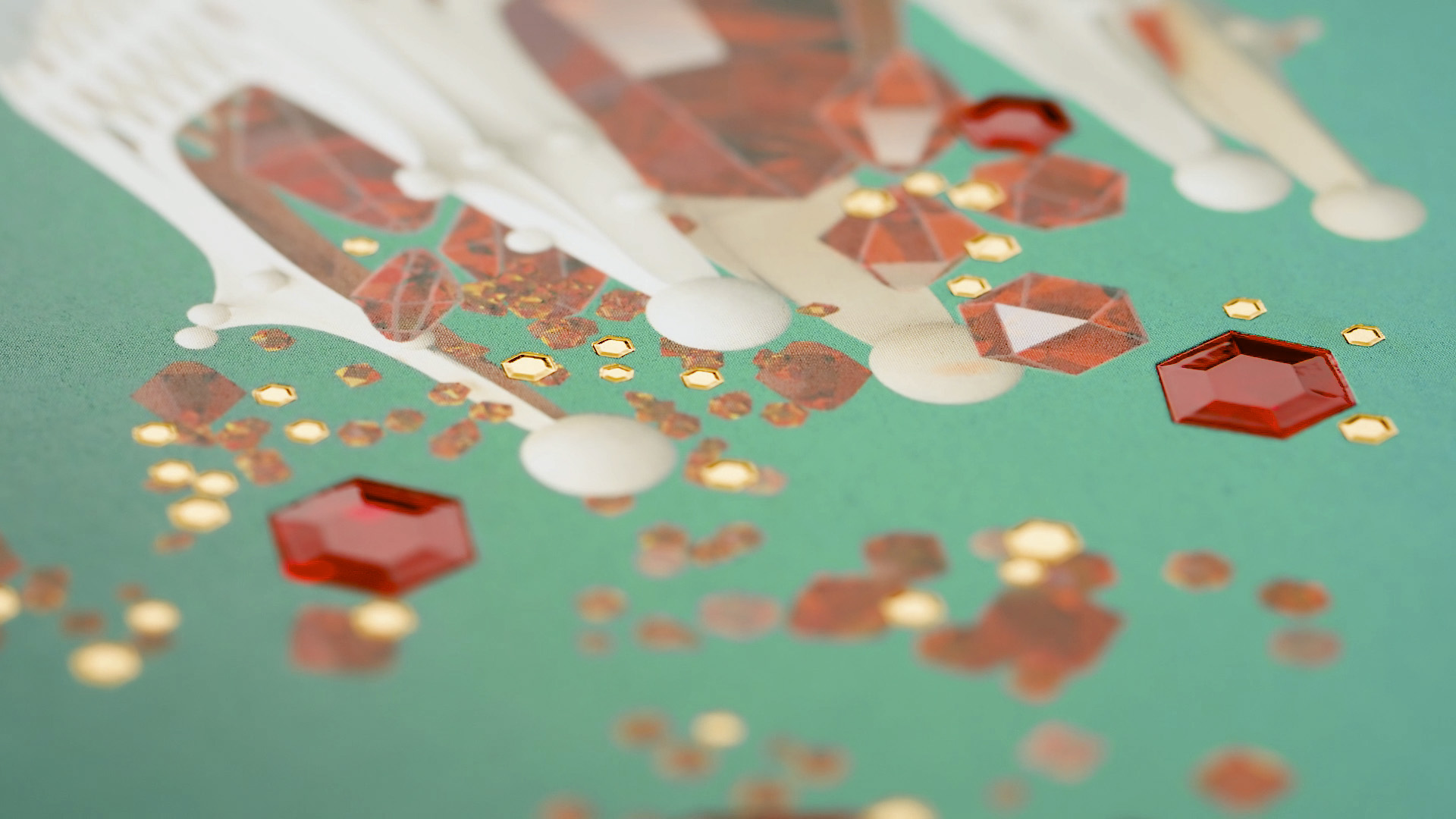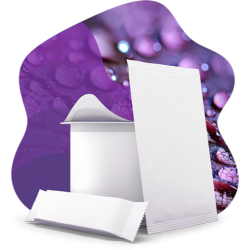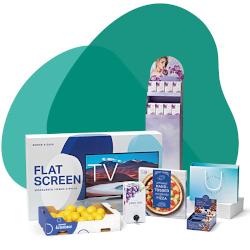
Experiencing finishes - hot and cold foil

"Hot" and cold foil are among the most popular finishing processes in the print and packaging market. Although similarities between the foils might be expected, they are very different in their application and use.

Frank Denninghoff, executive of GRÄFE Druckveredelung, explains their characteristics and possibilities – and what the Swatch Book for the premium paperboard Algro Design from Sappi has to do with them. Right from their application, the two finishing processes have considerable differences. While "hot foil" is applied to the base material using heat and an embossing die, cold foil is applied to the paper by means of adhesive. Accordingly, the term "embossed foil printing" is used for hot foil stamping and "cold foil transfer" in connection with cold foil. The two processes also have differing characteristics.
Differentiating hot and cold foil
"At the beginning, many people thought that cold foil transfer would replace embossed foil printing", explains Frank Denninghoff, "but that didn't happen. Rather, it quickly became clear to us that we had to operate very differently with cold foil. In this regard, through new means of design and the investigation of the wide-ranging possibilities, we perhaps also contributed to redefining the use of the process".

Whereas embossed foil printing is most effective when used in larger line widths, cold foil can be used from a line width of as little as 0.05 mm. This allows the rendering of the finest structures, grid patterns and delicate details. But beautiful results are also achieved in areas that are then overprinted inline. Compared to embossed foil printing, cold foil transfer is somewhat less brilliant and doesn't give rise to the haptic effects that make embossed foil printing so special. Cold foil nonetheless offers a broad spectrum of possible metallic colors and motifs that can be achieved in a single overprinting. These different characteristics give rise to various areas of application for GRÄFE Druckveredelung. Cold foil transfer can create, for example, delicate highlights that are integrated into the printing. With embossed foil printing, by contrast, attention-grabbing haptic effects can be attained. "We use finishes for completely different purposes", says Denninghoff. "Which process we use ultimately depends on the message to be conveyed by the brand or the product". Importantly, cold foil transfer places especially high demands on the base material. Rougher surfaces absorb adhesive too strongly to allow sufficient coverage to produce an optimal metallization effect, meaning that the surface must be very smooth and homogeneous.

"Hot foil", on the other hand, also works on a rough surface, with a matt contrast – but here too, the smoother the base material, the more brilliant the result. Such differences are illustrated in the new Swatch Book for Sappi's premium paperboard series Algro Design.
Partnership, with a love of high-quality print products
Sappi and GRÄFE Druckveredelung have enjoyed a years-long partnership, one that is characterized by their love of premium print products. In the production of the Swatch Book, the finish experts lent Sappi support right from the beginning, along with the agency G.A.S. the tool specialist H + M and the embossed foil manufacturer Kurz. Frank Denninghoff elaborates: "It was a close and intensive collaboration between experts. We all contributed, debated and tried things out. It was clear to all of us right away that we're a strong network of experts who love our work and whom you can trust".
Illustrating the effects of Algro Design paperboard

Whereas the front side of all Algro Design paperboards is double-coated, the various products in the series differ in the treatment of the back side: Algro Design is uncoated, Algro Design Card is single-coated and Algro Design Duo is double-coated. Depending on the back-side type, there are different areas of application. These differences in printing and finish processes were meant to be demonstrated in the production of the Algro Design Swatch Book. In this way, the various characteristics of the paperboard types and their respective individual design possibilities were intended to be illustrated. The effects are entirely different, allowing the series to convey diverse corporate messagesplain. The challenge in the printing, finish and composition of the Swatch Book was, among other things, that the three different back sides of the Algro Design paperboard were to be placed next to each other in a direct comparison, each one illustrating one third of an overall motif. "To get a uniform image, we therefore printed each motif on all three paperboards and then used only the respective one third for the Swatch Book", explains Denninghoff.
How finishes work
Denninghoff regards the Swatch Book as a unique tool for agencies, brand manufacturers and printing companies: "The fascinating thing about it is that you see the same motif, with various plain, relief and diffraction embossments, finishes and blind embossments, but on different material surfaces. It becomes clear how the character of the base material affects the finish: the colors are different, the finishes have different effects. But you can also discover how such extraordinary artworks are created technically – because each finish process is precisely described. The purpose of the tool is to enable you to see, to feel, to explain and ultimately to experience how finishes work in such an impressive way".
Curious about the Algro Design Swatch Book? Reserve your copy right away.







